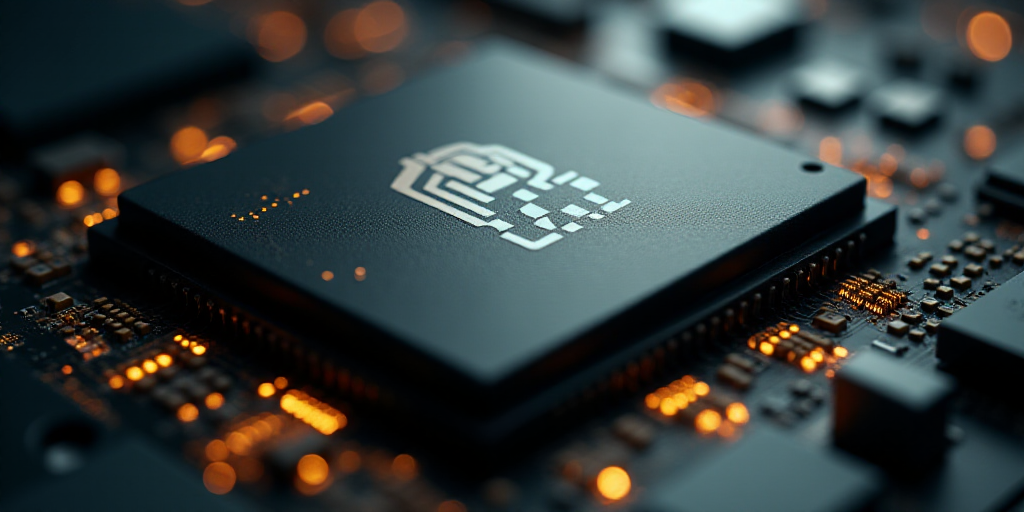Background on Nvidia and its Significance
Nvidia, a leading technology company specializing in graphics processing units (GPUs) and artificial intelligence (AI), has been a major player in the semiconductor industry. The company’s products are integral to various sectors, including data centers, gaming, and autonomous vehicles. Recently, Nvidia has faced challenges in the Chinese market due to US export restrictions.
US Export Restrictions and Nvidia’s Response
In April, the US government imposed restrictions on exporting Nvidia’s H20 chip to China. This move aimed to curb China’s technological advancements, particularly in AI development. As a result, Nvidia had to adapt its products to comply with these restrictions.
Nvidia’s CEO, Jensen Huang, announced that the Hopper architecture, which powers the H20 chip, can no longer be modified due to ongoing US export restrictions. Consequently, Nvidia had to develop a new chip tailored for the Chinese market.
New AI Chip “Blackwell” for China
According to sources familiar with the matter, Nvidia plans to launch a new set of AI chips under the Blackwell architecture for China at a significantly lower price than the restricted H20 model. The new GPU is expected to cost between $6,500 and $8,000, compared to the H20’s price range of $10,000 to $12,000.
- Key Specifications: The new chip will be based on Nvidia’s RTX Pro 6000D server GPU and use conventional GDDR7 memory instead of advanced high-bandwidth memory.
- Production Timeline: Mass production is expected to begin in June, according to the sources.
- Manufacturing Requirements: The new chip will have simpler manufacturing requirements, resulting in a more affordable price point.
Nvidia’s spokesperson confirmed that the company is still evaluating its “limited” options and remains excluded from the Chinese $50 billion data center market until a new product design and US government approval are secured.
Market Share Impact
China represents a substantial market for Nvidia, accounting for 13% of its sales in the previous fiscal year. This is the third time Nvidia has had to adjust its GPU offerings for China due to US export restrictions.
Nvidia’s market share in China has plummeted from 95% before 2022 to the current 50%, as a result of US export restrictions affecting its products. Huawei, Nvidia’s primary competitor in China, produces the Ascend 910B chip.
Huang warned that if US export restrictions persist, more Chinese clients may opt for Huawei’s chips. The H20 ban forced Nvidia to write off $5.5 billion in inventory and abandon $15 billion in sales.
Memory Bandwidth Limitations
The latest export restrictions introduced new limitations on GPU memory bandwidth, a critical metric measuring data transmission speed between the primary processor and memory chips. This aspect is particularly important for AI workloads requiring extensive data processing.
Jefferies, an investment bank, estimates that the new regulations cap GPU memory bandwidth at 1.7-1.8 terabytes per second, contrasting with the H20’s capability of 4 terabytes per second.
GF Securities predicts that the new GPU will achieve approximately 1.7 terabytes per second using GDDR7 memory technology, staying just within the export control limits.
Key Questions and Answers
- What is the new chip Nvidia is launching for China? Nvidia plans to release a more affordable AI chip called “Blackwell” for the Chinese market.
- What are the key specifications of this new chip? The Blackwell chip will be based on Nvidia’s RTX Pro 6000D server GPU and use conventional GDDR7 memory.
- When will mass production of the new chip begin? Mass production is expected to start in June.
- How have US export restrictions affected Nvidia’s market share in China? Nvidia’s market share in China has dropped from 95% before 2022 to the current 50% due to US export restrictions.
- What are the new memory bandwidth limitations for GPUs in China? The latest export restrictions cap GPU memory bandwidth at 1.7-1.8 terabytes per second.






